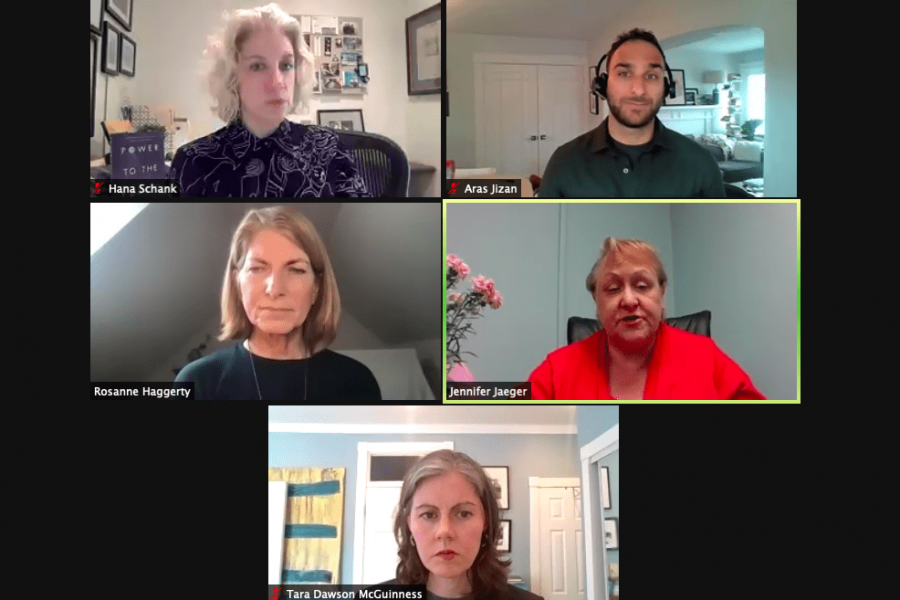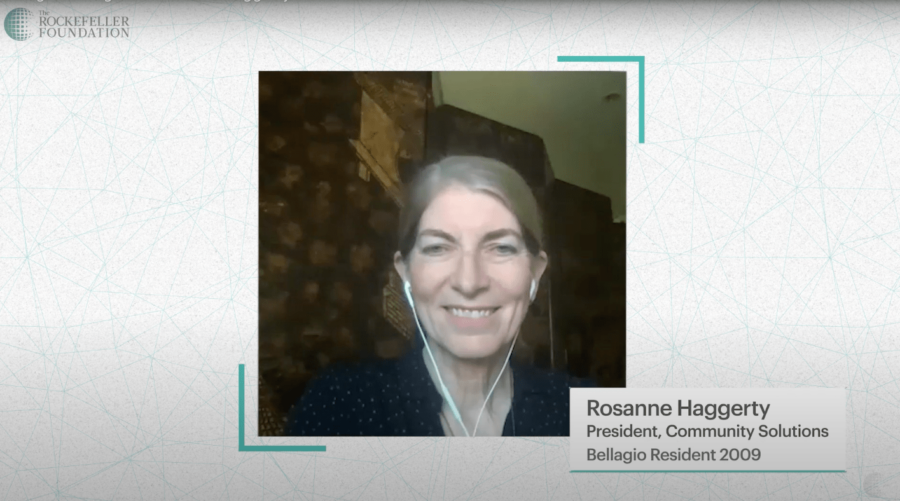On May 13, New America hosted a webinar to discuss the book: “Power to the Public: The Promise of Public Interest Technology,” by Tara Dawson McGuinness and Hana Schank, which features the efforts of Rockford, Illinois, and the Built for Zero movement.
Rosanne Haggerty and Aras Jizan of Community Solutions, along with Jennifer Jaeger of the City of Rockford, discussed how Built for Zero communities employ a data-driven approach to work toward functionally ending homelessness. This kind of work is an example of a new paradigm the book calls “public interest technology.”
Haggerty described the systems-level approach communities like Rockford are taking to build a future where homelessness is rare and brief.
“The energy of Built for Zero communities has been shifted toward preventing homelessness, finding new incidents, resolving them quickly, learning from what happened, and continually improving their local homeless response systems,” Haggerty said.
Roseanne Haggerty of @cmtysolutions: The frame has to be an accountability for a result that is defined by the people experiencing the problem.” <– THIS is a basic tenet of #PublicInterestTech!
— New America Public Interest Tech (@NewAmericaPIT) May 13, 2021
Building a Homeless Response System Using Public Interest Technology
Public interest technology, as outlined in the book, is an approach to solving the world’s most complex problems by:
- centering the people served when crafting policy
- measuring success and ensuring accountability with data, and
- testing strategies with small experiments before scaling up.
Many of these strategies are also helping the more than 80 Built for Zero cities and counties across the U.S. design systems of support directly around the people experiencing homelessness in their communities.
Traditionally, communities measure progress on homelessness with program outcomes, like food services provided or shelter beds filled. The first step that Built for Zero communities take to end homelessness is building quality, by-name data on everyone experiencing homelessness.
“When we say by-name list, what we really mean is data that is as close to comprehensive, real-time, and person-specific on all the people experiencing homelessness in a particular geography,” explained Aras Jizan, Data and Technology Portfolio Lead for Built for Zero.
“Our by-name list tells us what we need to know about them, including things like: have they returned to homelessness before? What system barriers exist for this population? Are there disabilities in play? It’s living data.” – Jennifer Jaeger of @CityofRockford pic.twitter.com/YEtqgRTTNo
— Community Solutions (@cmtysolutions) May 13, 2021
This data also enables communities to stratify their data by race, ensuring the homeless response system is not reproducing disparities that disproportionately harm people of color.
Once a community has a clear picture of homelessness in their community at any given time, they use this by-name data to identify barriers, test strategies, and make improvements in order to move the needle on ending homelessness.
How Rockford, Illinois Ended Homelessness
The approach that underpins the work in Rockford and across Built for Zero communities is to start with what a person experiencing homelessness needs, then rebuild the system to respond to those needs.
Jaeger described how developing relationships and trust with people experiencing homelessness helped the Rockford team reach their goal of ending veteran and chronic homelessness.
“We don’t allow, in our community conversations and internal staff discussions, to identify a homeless person’s characteristics as barriers to housing. We only allow system barriers in our discussion,” Jaeger said. “We must focus on: what is it about our community, and our housing structure, and our landlords, and our other systems that are keeping this person on the street?”
Jaeger told the story of a man who experienced chronic homelessness for years. After building a relationship with the man, they learned that he really wanted to watch the Chicago Cubs playing in the World Series. So, the Rockford team offered to put him up at a short-term residency hotel in order to watch the game. After that, they successfully connected him to permanent housing and services.
“Housing barriers are system barriers — they’re not people barriers. No one wants to sleep out in the street,” Jaeger said.
The future of solving homelessness
According to Haggerty, the future of solving homelessness must focus on getting upstream of the issue and shift the systems allowing homelessness to persist.
Using the Built for Zero approach and the support the movement provides, communities of all sizes are making progress on homelessness. Some, like Rockford, have reached functional zero. Others are working toward this goal and achieving reductions — even large cities. Detroit and Charlotte, North Carolina, for example, have reduced veteran homelessness by 30% or more.
“Once you join Built for Zero, you’ll never feel alone in addressing homelessness again,” said Jaeger.




